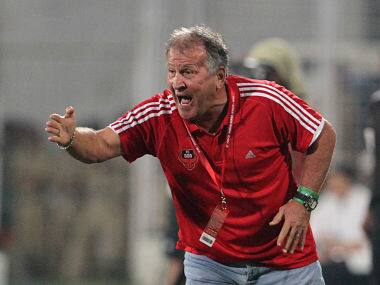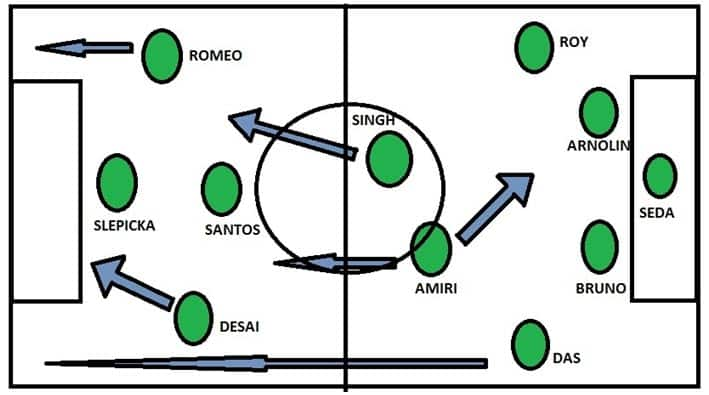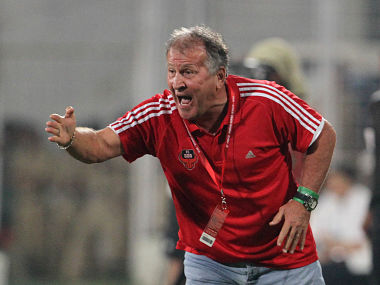By Sreya Mazumder A month ago, not even the most buoyant FC Goa supporter would have envisioned the change in the fortunes of the Margao-based franchise. Since the fateful Thursday in November on which they travelled north to face the Delhi Dynamos, still struggling to meander their way out from the bottom of the league table to last Wednesday when they were in Kolkata challenging for the top spot, Zico’s men have undergone a massive transformation. In their season opener against Chennaiyin FC, Pires and co. showcased a brand of football comprising of flair and finesse. Fluid attacking moves, swift interchange of passes, pressing the opposition at a high tempo – FC Goa enthralled the spectators, but the result indicated otherwise. This was a theme which continued throughout the entire first half of the inaugural Indian Super League season when the team, no matter where it played, created a number of chances but failed to finish majority of them. Combined with a stuttering defence which conceded nine goals in the first seven games (four of which were played at home), Goa had plummeted to utter depths. [caption id=“attachment_1808527” align=“alignleft” width=“380”]
 File picture of FC Goa coach Zico. Sportzpics [/caption] Goa started the season in a 4-1-4-1 formation with Peter Carvalho sitting in front of the back four, Pires and Andre Santos acting as the creative outlets with Clifford Miranda and Gabriel Fernandes flanking them on either side. Pires’ lack of match fitness meant the plan did not succeed. He still created moments of magic, but those were few and far between. A few matches into the season, Zico promptly changed the shape into a 4-4-1-1. Carvalho still sat in front of the back four, but this formation allowed the versatile Jewel Raja and emerging Indian winger Romeo Fernandez to influence the game. However, Carvalho’s penchant of getting dispossessed at crucial junctures proved costly for Zico’s side. The midfield was doing its job but the goals were not coming. Neither were the clean sheets.
File picture of FC Goa coach Zico. Sportzpics [/caption] Goa started the season in a 4-1-4-1 formation with Peter Carvalho sitting in front of the back four, Pires and Andre Santos acting as the creative outlets with Clifford Miranda and Gabriel Fernandes flanking them on either side. Pires’ lack of match fitness meant the plan did not succeed. He still created moments of magic, but those were few and far between. A few matches into the season, Zico promptly changed the shape into a 4-4-1-1. Carvalho still sat in front of the back four, but this formation allowed the versatile Jewel Raja and emerging Indian winger Romeo Fernandez to influence the game. However, Carvalho’s penchant of getting dispossessed at crucial junctures proved costly for Zico’s side. The midfield was doing its job but the goals were not coming. Neither were the clean sheets.
 This led to another tactical switch. The team lined up in 4-2-3-1, a patent formation for most clubs which look to play a possession-based football these days. The incredulous nature of this shape lies in the fact that it is as effective in attack as it is in defence, without overcommitting either way. It is with this formation and the players (showcased in the image) that FC Goa finally hit its stride. In four consecutive wins against FC Pune City, Kerala Blasters, North East United FC and Chennaiyin FC, Goa netted the ball eleven times while conceding just once. The central triumvirate of Bikramjit Singh, Zohib Islam Amiri and Andre Santos are the key to Goa’s system. It is highly surprising considering the fact that both Amiri and Santos are traditionally defenders, but Zico utilized their passing range and free-flowing style to Goa’s advantage. Amiri, the Afghan skipper is far more composed than Carvalho was while protecting the back four. Santos, who was once considered the successor to Roberto Carlos in the Brazilian national side, has let his inherent Samba flair do the talking for him on pitch, belting those free kicks and playing in the front-men behind the opposition defenders. Singh’s off-the-ball running has been the perfect complement for these two who has popped up in spaces left behind by the opposition time and again. The immensely talented Romeo Fernandez, often touted as India’s next football superstar, has stretched play through his direct, energetic style. He has found an able partner in Mandar Desai on the opposite wing, whose pace and trickery combined with the overlapping play of Narayan Das has ensured entry into the final third is a cakewalk for the Goans. Inclusion of Bruno Pinheiro into the team as a centre back alongside Arnolin meant stability at the back and the continuous leakage of goals were effectively plugged. The effect of the switch has been to such an enormous extent that FC Goa ended up having the most shots on target (121) and the least number of goals conceded per 90 minutes (0.8) at the end of the group stage. In any level of competitive football, those two are the primary statistics because they help in assessing how a team has actually fared on pitch and can be directly correlated to the win percentage. A club whose co-owners include Dattaraj Salgaocar and Shrinivas Dempo, the owners of Salgaocar FC and Dempo SC, two of I-League’s illustrious teams, a club which is managed by Zico who transformed Japan from a country without a professional football league to an Asian powerhouse within five years, a club which boasts of some of Indian football’s brightest talents in its squad courtesy its policy of taking players on loan from the Goa-based I-League teams — FC Goa always had every element to succeed in a tournament of this format. All it needed was the right system to let its stars flourish. Now that Zico and the rest have found it, the only sound emanating from the Fatorda Stadium seems to be “Força Goa”!
This led to another tactical switch. The team lined up in 4-2-3-1, a patent formation for most clubs which look to play a possession-based football these days. The incredulous nature of this shape lies in the fact that it is as effective in attack as it is in defence, without overcommitting either way. It is with this formation and the players (showcased in the image) that FC Goa finally hit its stride. In four consecutive wins against FC Pune City, Kerala Blasters, North East United FC and Chennaiyin FC, Goa netted the ball eleven times while conceding just once. The central triumvirate of Bikramjit Singh, Zohib Islam Amiri and Andre Santos are the key to Goa’s system. It is highly surprising considering the fact that both Amiri and Santos are traditionally defenders, but Zico utilized their passing range and free-flowing style to Goa’s advantage. Amiri, the Afghan skipper is far more composed than Carvalho was while protecting the back four. Santos, who was once considered the successor to Roberto Carlos in the Brazilian national side, has let his inherent Samba flair do the talking for him on pitch, belting those free kicks and playing in the front-men behind the opposition defenders. Singh’s off-the-ball running has been the perfect complement for these two who has popped up in spaces left behind by the opposition time and again. The immensely talented Romeo Fernandez, often touted as India’s next football superstar, has stretched play through his direct, energetic style. He has found an able partner in Mandar Desai on the opposite wing, whose pace and trickery combined with the overlapping play of Narayan Das has ensured entry into the final third is a cakewalk for the Goans. Inclusion of Bruno Pinheiro into the team as a centre back alongside Arnolin meant stability at the back and the continuous leakage of goals were effectively plugged. The effect of the switch has been to such an enormous extent that FC Goa ended up having the most shots on target (121) and the least number of goals conceded per 90 minutes (0.8) at the end of the group stage. In any level of competitive football, those two are the primary statistics because they help in assessing how a team has actually fared on pitch and can be directly correlated to the win percentage. A club whose co-owners include Dattaraj Salgaocar and Shrinivas Dempo, the owners of Salgaocar FC and Dempo SC, two of I-League’s illustrious teams, a club which is managed by Zico who transformed Japan from a country without a professional football league to an Asian powerhouse within five years, a club which boasts of some of Indian football’s brightest talents in its squad courtesy its policy of taking players on loan from the Goa-based I-League teams — FC Goa always had every element to succeed in a tournament of this format. All it needed was the right system to let its stars flourish. Now that Zico and the rest have found it, the only sound emanating from the Fatorda Stadium seems to be “Força Goa”!
From rockbottom to ISL semis: Zico's tactical brilliance makes FC Goa serious contenders
FP Archives
• December 14, 2014, 16:37:30 IST
Combined with a stuttering defence which conceded nine goals in the first seven games (four of which were played at home), Goa had plummeted to utter depths.
Advertisement
)